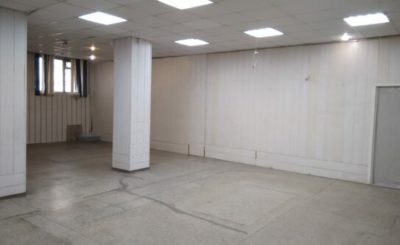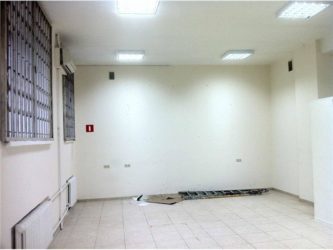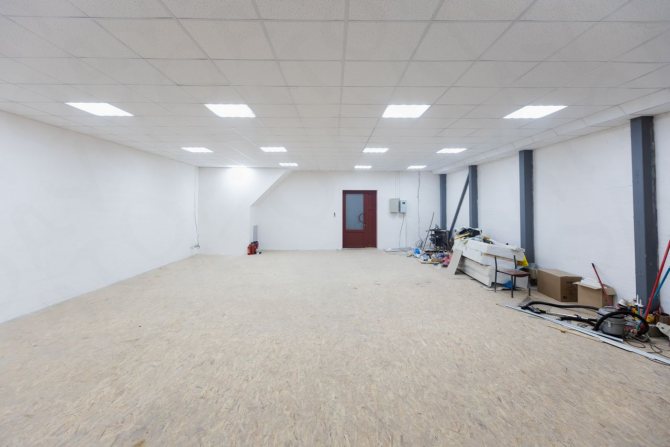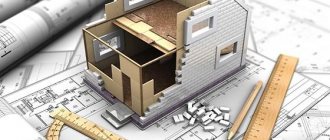A change in the purpose of premises represents a change in its characteristics and type of use. For the purpose of changing the purpose, it is important to classify the premises as a residential or non-residential facility, its legal status and form of ownership. To coordinate and legitimize the change of purpose of the premises, redevelopment and reconstruction are carried out to bring the characteristics of the object to the necessary requirements.
Get an estimate of the cost of this service using our price calculator - here
Read in this material when it is necessary to change the purpose of residential and non-residential premises, what should be done during surveys and design, where to go for approvals.
What is a change in the purpose of premises in design and construction?
According to the general classification, all buildings and premises are divided into residential and non-residential objects. The purpose of using residential premises is always the same - permanent residence of citizens. In some cases, specified in the Housing Code of the Russian Federation, housing can be used for professional activities, if this does not violate the interests of other residents of the house and is not associated with dangerous and harmful work. According to functional characteristics, residential premises are divided into main, auxiliary, technical, and service.
The purpose of non-residential buildings and premises is determined by type of activity - production, retail, warehouse, educational, medical and other facilities. For each type of purpose there are certain requirements of SP, GOST, and other regulations. This is especially true for the field of fire safety, since its standards will differ significantly for different types of purposes of objects.
Dear Clients!
The information in this article contains general information, but each case is unique. You can get a free consultation from our engineers using one of our telephone numbers - call:
8 Moscow (our address)
8 St. Petersburg (our address)
All consultations are free.
Changing the purpose of premises is permitted by decision of the owner and subject to the restrictions specified in regulations. To confirm compliance with the new purpose, the premises need to carry out repair work, design redevelopment and reconstruction, and undergo approvals. Based on the results of all procedures, information about the new purpose of the object will be indicated in the Unified State Register of Real Estate.
Regulatory acts
The requirements for changing the purpose of residential properties are most stringent. The main purpose of use (residence of citizens) can only be changed when the premises are transferred to the status of non-residential objects. For such types of work, it is necessary to obtain the consent of the owners of apartment buildings, and the general rules of the procedure are specified in the Housing Code of the Russian Federation. Also, for a change of purpose during redevelopment and reconstruction, the following regulations apply:
- Moscow Government Decree No. 508-PP ();
- Moscow Government Decree No. 106-PP ();
- Moscow Government Decree No. 432-PP ();
- SP 54.13330.2016 ()
- GOST R 21.1101-2013 ();
- SanPiN 2.1.2.2645-10 ().
To change the purpose of non-residential premises that are municipally owned in Moscow, a special document is used - Moscow City Law No. 17 dated 06/03/2009 “On control over the use of real estate in Moscow”.
In simple terms
Any room can be used only for its main purpose. You cannot open a retail outlet or cafe or start production in a residential area. Catering services cannot be provided in premises whose intended purpose is production. To change the purpose, you need to design and carry out a set of works to change the configuration and characteristics of the object and its engineering systems. For this purpose, redevelopment and reconstruction are carried out.
Classification of areas and their characteristics
Free - what is it?
In order to expand the possible areas of use of real estate, you can give it the status of non-residential premises for free use. Such facilities are operated by owners and tenants in various areas of activity, with the exception of specialized ones.
The intended purpose of the property often becomes known at the time of design, but for the owner the best option is to create a universal structure . Such a building can be repurposed at the request of the tenant. Often non-residential premises for free purposes are used as shopping centers, offices, household or social enterprises.
Free-use premises, despite their multifunctionality, cannot be fully suitable for all areas of activity. Given the specifics of the institution’s work, in some cases additional documentary approvals will be required.
Residential
According to Law No. 218-FZ, Article 8, Part 5, Clauses 9, 10, 11, the Unified State Register includes additional information about the purpose of the building, premises, and its name. When registering for cadastral registration, only basic information about the property changes; regarding changes in purpose, you should be guided by the Housing Code of the Russian Federation (Chapter 4). It is important that changing the purpose of a room in a building does not entail a change in the building itself (for example, a residential premises, a non-residential building).
In this regard, authorized state bodies send information about changing the purpose of non-residential premises to the Unified State Register of Real Estate for inclusion of such information in the register (Law No. 218-FZ, Article 32, Part 1).
Read more: If you registered an individual entrepreneur but do not conduct business
Law 221-FZ of July 24, 2007 “On the State Real Estate Cadastre” includes information about the type of real estate (non-residential or residential building), as well as its purpose (residential, non-residential premises). This information is also recorded in the certificate of state registration of ownership.
Read more about the classification of non-residential premises here.
When a change in the purpose of premises is required
The owner’s decision to change the purpose of the premises may be due to the following reasons:
- to change the status of the premises, i.e. transfer from residential to non-residential or vice versa;
- to change the purpose of the technical floor to office space;
- to repurpose an object for another type of activity (a typical case is opening a store in a former warehouse);
- to combine rooms with different purposes (for example, if the apartment will expand the living room area due to the corridor);
- when changing the type of activity under the lease agreement (for example, if under a long-term agreement the tenant decided to close the store and open a restaurant);
- in other cases that do not contradict regulations.
As stated above, the decision to change the purpose of an object can only be made by the owner. If the premises have several owners, unanimous approval of the upcoming work is required. For non-residential premises on lease, the decision to change must be approved by the State Property Inspectorate, which acts as the lessor of the capital's real estate.
What are free-use premises?

A review of free-use premises, perhaps, should begin with the fact that this concept, as well as the abbreviation used with a similar meaning (PSN), is not a legal term in the strict sense of the word, but rather a colloquial expression. The phrase “vacant space” can often be found in advertisements submitted by both owners and potential tenants.
The phrase “rent of non-residential premises for free use” hides the rental of separate buildings (usually small in area and number of floors) or parts thereof
. They can be used to organize a warehouse, store, office, cafe, etc.
Thus, the market for free-use premises provides for the possibility of choice: the tenant himself has the right to decide for what purposes to equip the rented areas.
However, it should be borne in mind that in each specific case, different requirements will be imposed on the PSN area.
Private business continues to actively develop, and entrepreneurs need appropriate premises to fully carry out commercial activities. Most often, those who want to open their own store resort to renting PSN.
One of the most popular trends in recent years is the placement of retail outlets and points of provision of certain services.
on the first floors of residential buildings. This is due to a number of reasons:
- an entrepreneur can open a business in the historical center, near transport interchanges or in one of the densely populated areas - local residents will happily use the services of a hairdresser or buy groceries in a store located in a neighboring house / within walking distance;
- it is more profitable for a tenant to rent premises in a residential area or in the central part of the city than to build a separate shopping pavilion or rent an office in a shopping center; Non-residential premises for free use, due to their small area, allow you to save on rent.
All of the above does not mean that in industrial areas
PSN rental is not relevant. They can be used to organize certain industries (baking bread, for example) or services (car service).
PSN area
An overview of the market for free-use premises is complicated by their multifunctionality. They cannot be clearly classified as one or another type of space, since in each specific situation the purpose and method of use will be determined directly by the tenant.
It is not beneficial for developers to pre-establish specific characteristics of free-use premises that limit the purpose of a particular space. This would mean that before renting out this or that area, it is necessary to carry out the appropriate redevelopment, finishing work, etc.
However, practical business people are willing to buy or rent vacant premises. This is explained by the fact that in each case, tenants, as a rule, already have a certain set of formulated requirements for the technical characteristics of the PSN.
Before using the service of renting vacant premises from the owner, they carefully study the entire package of services (price, payment procedure, area, communications, etc.).
It should be noted that most often landlords strive to ensure that the premises they rent out are classified as sales offices or shops, since in these cases the rental rate becomes much higher.
What are the benefits of renting vacant premises?
Let's list some arguments in favor of renting a PSN to start your own business:
- · versatility
(in such buildings or premises you can place a warehouse or office, administrative office or store, and, if desired, you can combine different types of goods and services); - equipment
(as a rule, PSN already have all the communications necessary for work - the entrepreneur only needs to bring the necessary equipment and furniture); - a wide selection of locations
(you can select a PSN in any area that maximally covers the target audience); - · price variety
(every entrepreneur can find a PSN within their means, since prices are determined mainly by geographical location and footage); - integrated approach
(if necessary, you can rent additional space in the same building that is already in use, or in neighboring properties); - benefits
(renting a PSN from the owner is much cheaper than purchasing even the smallest area as property).
Source: https://gemainvest.ru/articles/detail.php?code=pomeshhenija-svobodnogo-naznachenija
What projects and work are needed to change the purpose of the premises?
Changing the purpose of premises occurs by agreeing on redevelopment and reconstruction projects, and performing work on site. When the purpose of the technical floor changes, a reconstruction is designed. The list of works and changes in the characteristics of the premises may include:
- arrangement or dismantling of a separate exit;
- dismantling, moving or installing walls, partitions (including redistribution of space between rooms);
- expanding, sealing or cutting openings for windows and doors;
- transfer, dismantling, installation or replacement of utilities, plumbing equipment.
This is not a complete list of works that can be designed for the upcoming change of purpose of the premises. The exact choice of solutions depends on the initial characteristics of the object, the goals of the customer and the content of the technical specifications, restrictions of regulations. ]Smart Way[/anchor] specialists will provide you with assistance in choosing effective ways to change your destination.

Work must be carried out after design and approval, as there are prohibitions on changing the purpose of premises
Survey stages for designing a change of use of premises
Not only the choice of planning solutions, but also the very possibility of changing the purpose depends on obtaining accurate initial data about the condition and characteristics of the object. Before design, the following activities are carried out:
- the technical specifications are studied, where the customer indicates the current and desired type of purpose, determines the basic requirements for the characteristics of the premises;
- technical, cadastral and operational documentation for the building, premises, and engineering systems is studied;
- a visual inspection is carried out in the facility itself, on its structures and utility networks;
- an instrumental examination is prescribed to identify damage and defects, determine the actual wear of structures and elements, and clarify the features of the object for future work;
- as necessary, special examinations are carried out (for example, using thermal imagers, ultrasound or scanners);
- Load-bearing structures that may be impacted during work are examined.
Rent of premises for free use from the owner. Classification of premises

A free-type room is a very multifunctional facility. At the design stage, the developer takes into account many factors due to which the premises receive characteristic features.
Free type premises - what is it?
Their main advantage is the layout, which will allow you to create a regular office space or retail space without much difficulty.
Thanks to this, the owner will be able to focus on the needs of tenants, which will be very beneficial for him in economic terms. Let's figure out what the key factors are in free-use premises.
At the beginning of the 21st century, the commercial sphere of activity began to develop, so there was an acute shortage of such free-type premises that could be turned into an office or store in the future.
The problem was solved in two ways: purchasing residential property on the ground floor with subsequent redevelopment or investing money in new buildings.
- The first option seemed faster and more reliable, because when buying an apartment and converting it into a commercial space, the results are immediately available upon opening.
- The second option of investing money in new buildings did not always please entrepreneurs, because this was work for the future.
Characteristics of free-type premises
Due to the layout features and characteristics, it is possible to distinguish a category of objects that are classified as free-use premises. Depending on their characteristics, they are conventionally divided into “Premium”, “Luxury”, “Standard” and “Economy”.
- Higher class premises are located closer to the city center near administrative buildings. They are distinguished by high ceilings and large windows, the presence of modern security and fire safety systems, and underground parking. Most often, they house branches of commercial banks or jewelry stores. Such premises are available for rent and cost accordingly.
- Luxury standard premises are most often located in historical areas of the city. Such objects are located in buildings that have a similar appearance to the general architecture of the area. They are in good repair and have security measures (video surveillance and fire alarm).
- Objects in the “Standard” category are more in demand, because their prices are much lower, but they are also located in Soviet buildings. The disadvantages include low ceilings that do not exceed 3.5 m, cramped elevators and other features of buildings from the USSR period.
- In most cases, vacant Economy class premises are located directly in a residential multi-storey building. The difference from a regular apartment is the presence of a separate entrance, which is located towards the street. This option will be an excellent solution for entrepreneurs who want to open a small store or workshop.
A feature of free-use properties is their transformation depending on the needs of tenants:
- office space for a commercial organization;
- small trading platforms for displaying and selling goods or services;
- warehouse or storage facility;
- workshop for providing production or repair services;
- public establishments (cafes, bars).
Thanks to the unique layout of such premises, they can be divided into several functional areas (for example, a cafe-bakery or a warehouse-shop).
Where to go to change the purpose of premises
The approval algorithm for changing the purpose of premises depends on their status and form of ownership. For residential and non-residential premises in apartment buildings, the procedure will take place in the following stages:
- obtaining the consent of the owners of the premises;
- obtaining the consent of the owners of adjacent apartments, convening a general meeting and obtaining approval from 2/3 of the owners of the entrance and house (if the work is related to the impact on common property);
- development of project documentation;
- contacting the Moscow Housing Inspectorate (MZHI) for approval of redevelopment with a change of purpose;
- performance of work, contacting the Moscow Housing Institute to obtain an acceptance committee certificate;
- contacting the BTI to make changes to the technical passport of the building.
During the approval process, it is necessary to obtain approval from the Ministry of Emergency Situations and the SES. They will approve the project while complying with fire, sanitary and hygienic and epidemiological safety standards.
For premises in non-residential buildings, the change of purpose takes place differently. For privately owned properties, the project is approved by the customer himself. You only need to contact MosKomArchitecture for approval if façade work is being carried out at the same time. If the object is municipally owned and leased, the project is sent to the DGI for approval. If the decision is positive, not only will it be allowed to carry out work and change the purpose, but also an additional agreement to the lease agreement will be drawn up.
To change the purpose of a technical floor to office space, a reconstruction project must be submitted for examination. After this, a construction permit must be obtained through Gosstroynadzor. When the work is completed, a permit to put the facility into operation is issued through the same body.
Expert commentary. In any case of changing the purpose of premises, the final stage will be cadastral registration in Rosreestr. To do this, you need to order a technical plan from a cadastral engineer. The technical plan will reflect all changes in the configuration and characteristics of the premises, which Rosreestr will take into account in the Unified State Register of Real Estate. After completing all procedures, an extract from the Unified State Register is issued, which will indicate the new characteristics and changed purpose of the object. ]Smart Way[/anchor] specialists will also provide assistance in obtaining a technical plan and undergoing cadastral registration.
The project will describe the condition of the premises before and after the work.
Answer
According to clause 15, clause 1, article 7 of the Federal Law of July 24, 2007 No. 221-FZ “On the State Real Estate Cadastre”, the purpose of a building is understood as “non-residential building”, “residential building” or “apartment building”. And the appointment can be changed only in the manner prescribed by federal law. Changing the name (shopping and hotel complex, administrative building) in cadastral registration information is possible at the request of the copyright holder on the basis of a technical plan prepared by a cadastral engineer. To do this, the owner of the property must contact the cadastral engineer to prepare a technical plan, and then the cadastral registration authority with an application to make changes to the cadastral registration information, attaching a technical plan with a new name. After entering information about a change of name in the state real estate cadastre, the owner must contact the relevant body of Rosreestr with an application to make changes to the information in the unified state register of rights to real estate and transactions with it and to issue a new certificate. Such actions are paid. The current legislation does not provide for any liability for the use of a building not in accordance with its name. The owner himself has the right to determine what name of the object to give, whether to change it, or not to use any name at all.
Read more: How much notice is given before an employee is fired?
The rationale for this position is given below in the materials of the “Lawyer System”
.
“In accordance with paragraph 29 of part 2 of Article 7 of the Federal Law of July 24, 2007 No. 221-FZ “On the State Real Estate Cadastre” (hereinafter referred to as the Law on the Cadastre), the name of the building or structure is entered into the state real estate cadastre, determined by the procedure for maintaining the state real estate cadastre , if there is such a name. This norm came into force on October 1, 2013.
However, the requirements of the Order of the Ministry of Economic Development of Russia dated November 23, 2011 No. 693 “On approval of the form of the technical plan of a structure and requirements for its preparation” provided for the display of the specified characteristics until October 1, 2013, and therefore cadastral engineers when preparing technical plans for structures in the relevant details information about the name of the structure was indicated in accordance with the documents.
Currently, cadastral registration of changes in information from the state real estate cadastre regarding the characteristics of the “Name” of a structure can be carried out on the basis of the documents provided for in Part 2 of Article 16 of the Cadastre Law, namely, the technical plan.”
Article 7. Composition of information from the state real estate cadastre about the property
1. The following information about the unique characteristics of the property is entered into the state real estate cadastre:
15) purpose of the building (non-residential building, residential building or apartment building), if the property is a building;
Article 20. Persons entitled to apply for cadastral registration
3. The owners of such real estate objects or, in cases provided for by federal law, other persons have the right to apply for accounting of changes in real estate objects.
Article 12. Unified state register of rights to real estate and transactions with it
Amendments to entries in the Unified State Register of Rights that do not correspond to the title document are carried out in the manner established by Article 21 of this Federal Law.
Article 21. Correction of technical errors made during state registration of rights
1. A technical error (a typo, a typo, a grammatical or arithmetic error or a similar error) made by the body carrying out state registration of rights during the state registration of rights and leading to a discrepancy between the information entered in the Unified State Register of Rights and the information in the documents on the basis of which information was entered into the Unified State Register of Rights (hereinafter referred to as a technical error in the records), is corrected* by decision of the state registrar within three days after the discovery of the specified error or receipt in writing from any interested party of an application to correct the technical error in the records.

If you need to change the type of non-residential real estate, questions arise - where to go, where to start, what to do with title documents, etc.
In the article we will talk not only about the types of non-residential premises and their purposes, but also about how to change the purpose for which the area is intended.
Dear readers! Our articles talk about typical ways to resolve legal issues, but each case is unique.
If you want to find out how to solve your particular problem, please use the online consultant form on the right or call. It's fast and free!
Examples of combinations of premises of our company
We invite you to familiarize yourself with examples of the work of our specialists in changing the purpose of premises. The projects were successfully approved in 2019.
Example 1. After the consolidation of auxiliary premises, the location of the office of a large company was agreed upon.

Get an estimate of the cost of this service using our price calculator - here
Example 2. After agreeing on the change of purpose of the technical floor, work was carried out to combine the premises for an office.

Timing and cost
It is extremely difficult to determine in advance the cost and timing of design and approvals for changing the purpose of premises. It is necessary to take into account the indicators and characteristics of the room and its structures, features of systems and communications. Prices and design deadlines will be determined based on the customer’s technical specifications, survey results, and study of source documentation. ]Smart Way[/anchor] will offer the most favorable terms of cooperation, help you save on design and construction work without loss of quality, and arrange all the necessary approvals for a change of purpose.
What is it and why is it needed?

There is no specific definition of a non-residential property, but there are a number of signs that allow an object to be classified as non-residential.
Non-residential premises - real estate, but not necessarily representing separate buildings, but separate parts of buildings clearly delineated by boundaries.
Non-residential properties cannot be used for housing.
A non-residential building may serve as a catering establishment, such as a cafe, restaurant, bar . However, there must be premises used for cooking, storing and cutting food, must comply with sanitary and hygienic standards - be lined with glazed ceramic tiles, have a special floor covering, etc.
Slightly different requirements for medical premises. institutions, and completely different - when non-residential real estate houses a gym, fitness center, kindergarten, office, pharmacy, etc., and not only for san. requirements, but also for fire safety.
Knowing exactly and being able to verify by checking documents that specifically indicate the type of non-residential premises and its purpose is very important when:

The buyer or tenant is looking for non-residential premises for a specific purpose, which will allow them to save money by purchasing or renting the exact area they are looking for, with a suitable purpose and the required finishing.
In the process of preparing paperwork for opening a business, a lot of problems are eliminated if the real estate documents contain records of the intended purpose of the premises that correspond to the area of activity.
When registering for cadastral registration with the State Property Committee (Clause 16, Part 2, Article 7 of Law No. 221-FZ of July 24, 2007), data on the purpose of the premises (residential, non-residential) will also be recorded.
It is very important to prove that the residential building has a non-residential purpose, otherwise the area cannot be used for business.
The rules for maintaining the EDGP, approved by the RF PP dated 02/18/1998 N 219, prescribe an indication of the main purpose of the premises according to the BTI, and clause 67 requires maintaining records of changes.
This means that if you need to change the intended purpose, you should make adjustments in the Unified State Register and State Property Committee database, as well as in your title documents - this is important.
Not only its civil legal status, but also the amount of rent and the purchase and sale price depend on how non-residential premises are designed from the point of view of their intended use.
Read more: Treatment of cancer patients in Russia is paid or free
Now let's move on to the types of purposes of non-residential premises.
Problems and difficulties when changing the purpose of premises
In some cases, when changing the purpose of the premises is not allowed, this cannot be achieved even through the court. However, many problems and difficulties can be successfully solved:
- in case of significant wear and poor condition of structures, you can choose options with reinforcements, design a complete or partial replacement of individual elements;
- if problems arise with obtaining the consent of the owners, you can hold an absentee vote, personally convince residents of the safety of both the work and the benefits of the new facility;
- To reduce the costs of redevelopment, effective solutions will be selected without loss of quality;
- If there is an unreasonable refusal to change the appointment, you can appeal the decision through the court with legal support.
In your interests, we will achieve quick approval for a change in the purpose of the premises, prepare a project and other documents strictly in accordance with legal standards.
Advantages of our company
Our company specializes in services in the field of construction and design; we will help you coordinate the change of purpose of premises in a short time. We offer:
- assistance in the development and preparation of documentation for redevelopment and reconstruction;
- provision of turnkey services, i.e. from the stage of examination to receiving an extract from the Unified State Register with the new purpose of the object;
- a wide range of additional design services.
Our specialists will help eliminate all difficulties and problems that arise during design and approvals. An additional advantage for our clients will be saving time and money, since we work without intermediaries and imposing unnecessary services.
conclusions
A change in the purpose of premises represents a change in its characteristics and type of use. For the purpose of changing the purpose, it is important to classify the premises as a residential or non-residential facility, its legal status and form of ownership. To coordinate and legitimize the change of purpose of the premises, redevelopment and reconstruction are carried out to bring the characteristics of the object to the necessary requirements.
You can order design for changing the purpose of premises and assistance in approvals from ]Smart Way[/anchor]. Contact us, we will offer the best terms of cooperation!
Get an estimate of the cost of this service using our price calculator - here
The following materials were used in preparing the article:
- Town Planning Code of the Russian Federation ();
- Housing Code of the Russian Federation ();
- Moscow Government Decree No. 508-PP ();
- Moscow Government Decree No. 106-PP ();
- Moscow Government Decree No. 432-PP ();
- SP 54.13330.2016 ()
- GOST R 21.1101-2013 ();
- SanPiN 2.1.2.2645-10 ().








